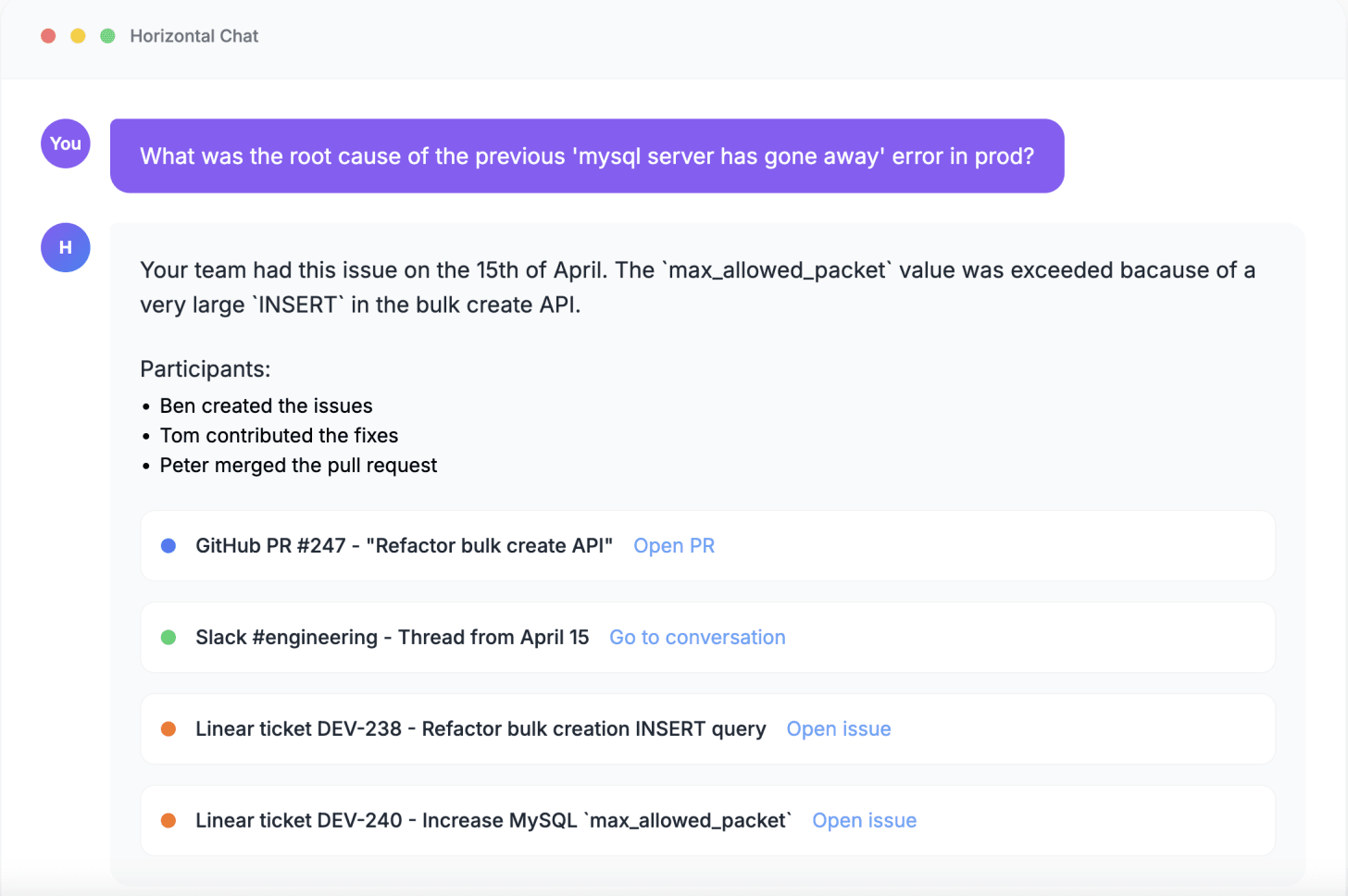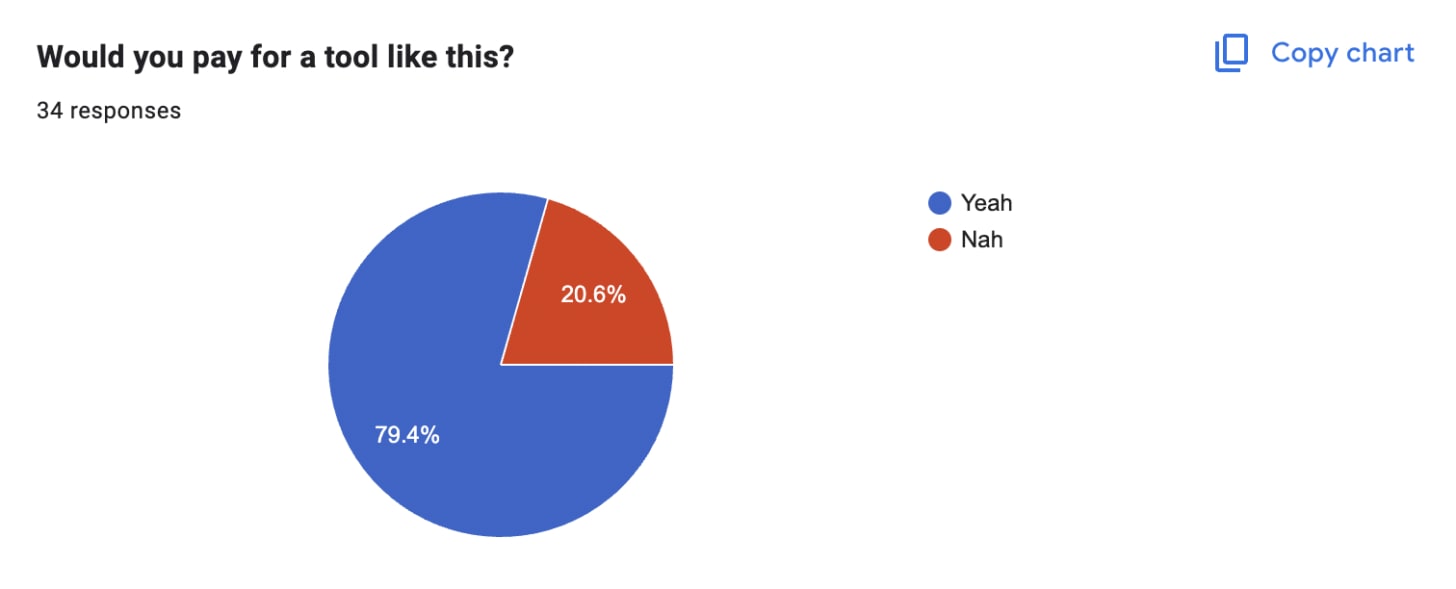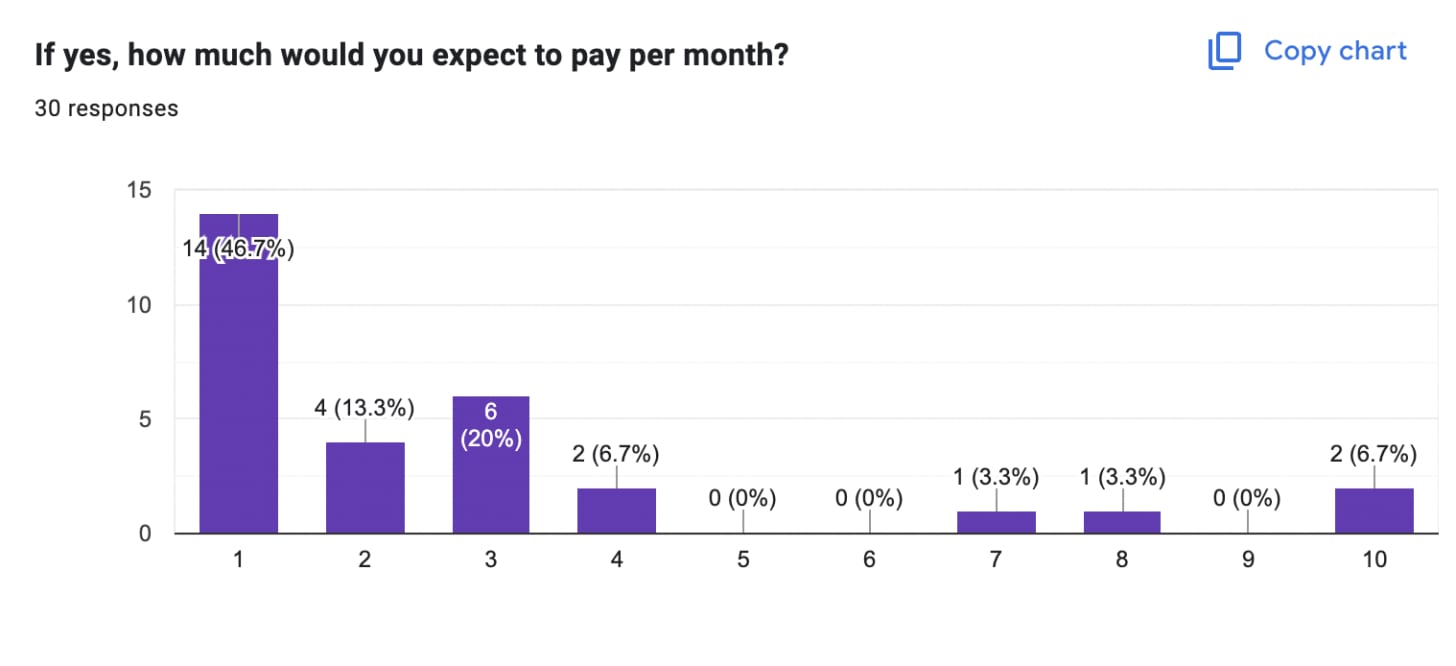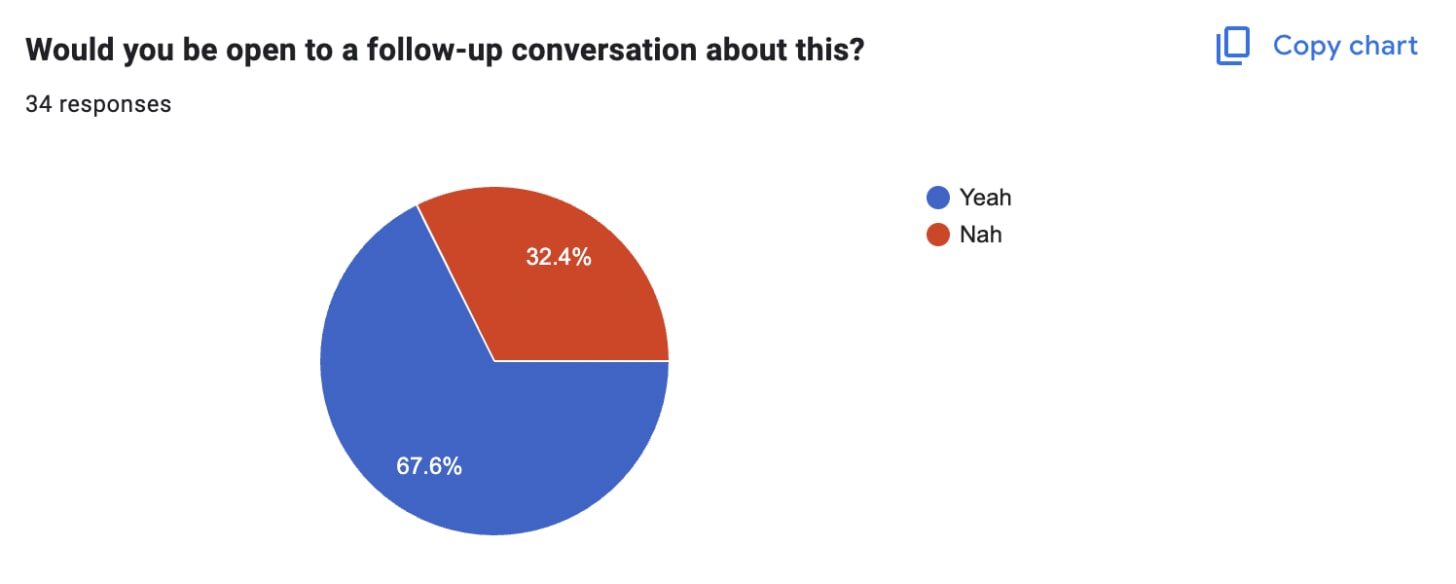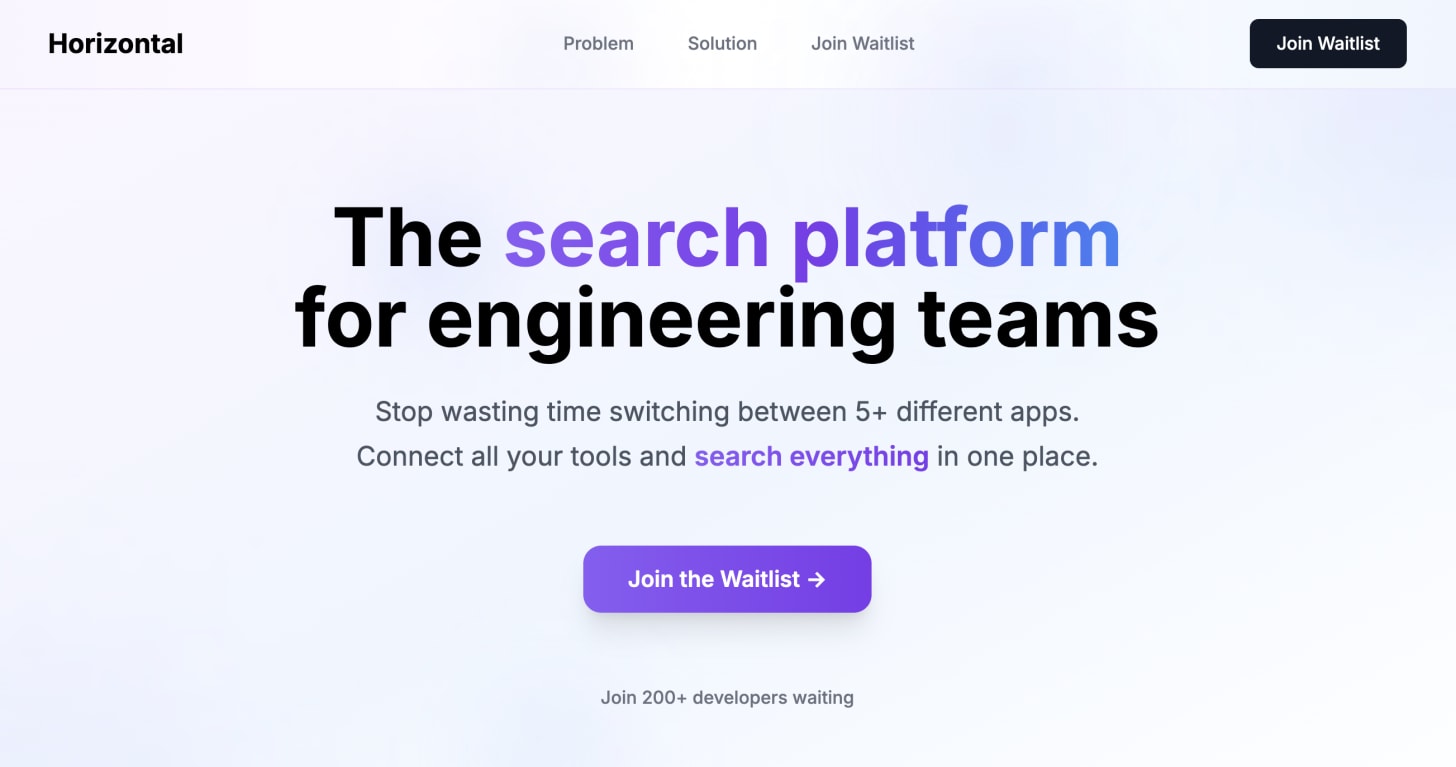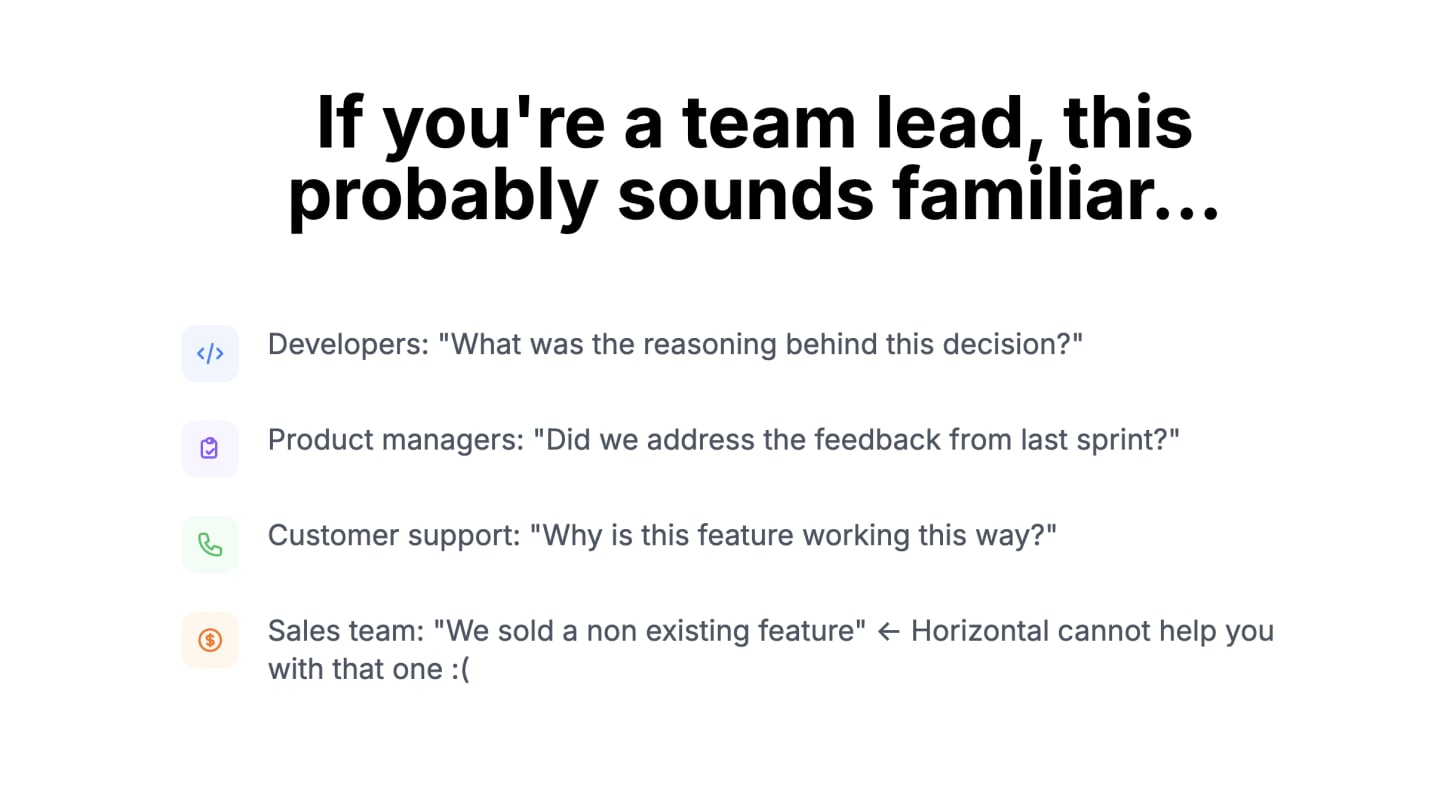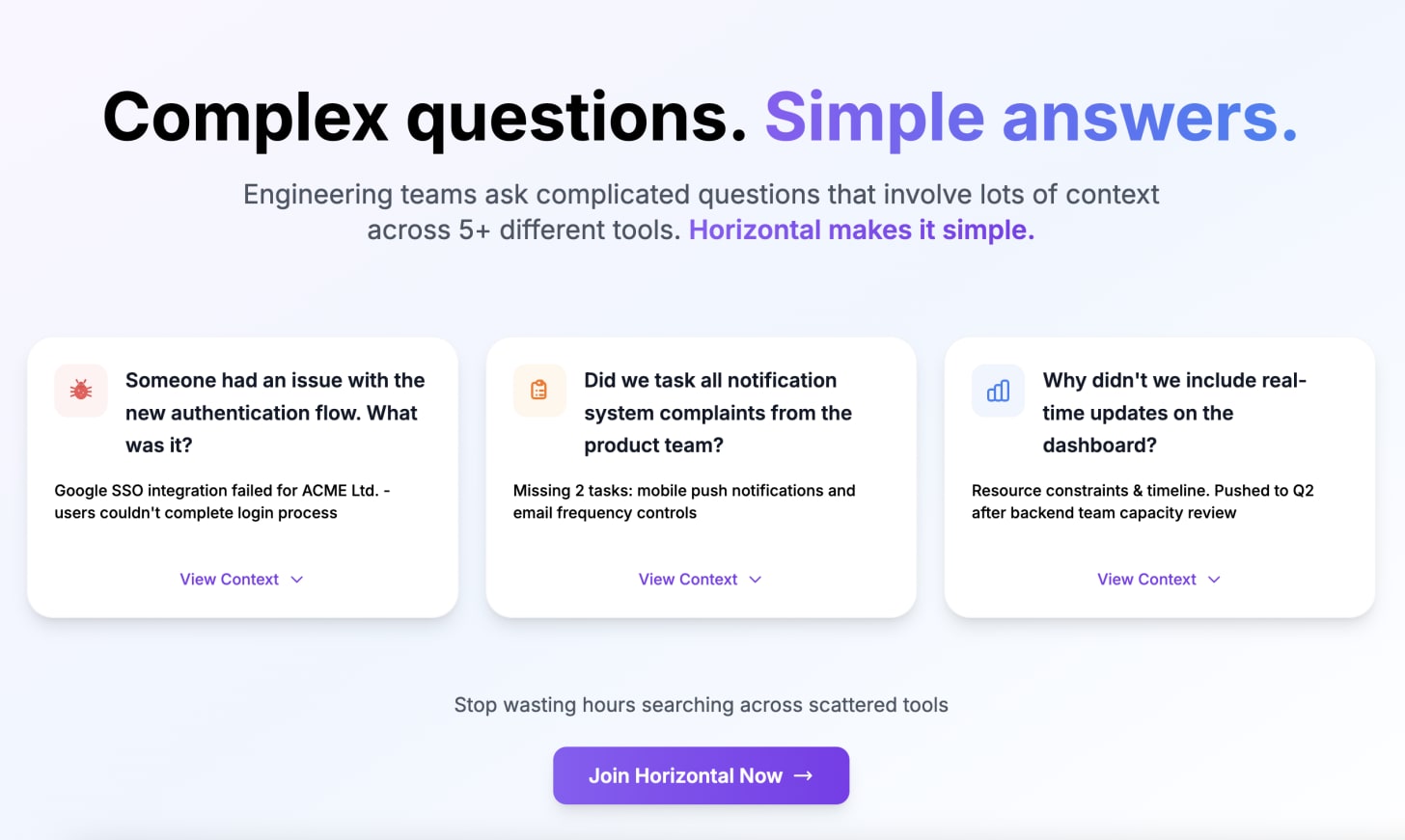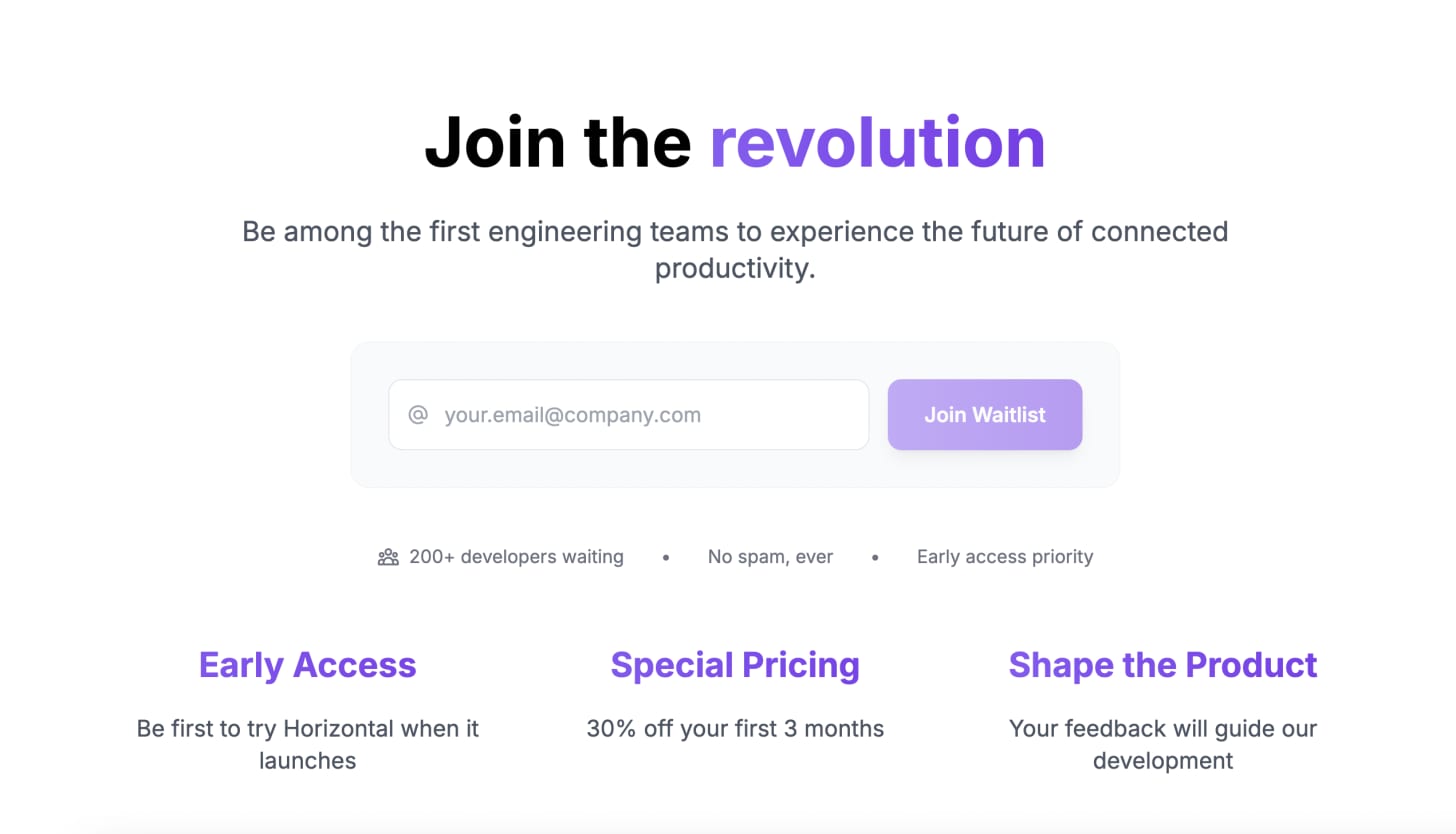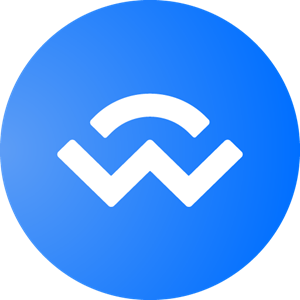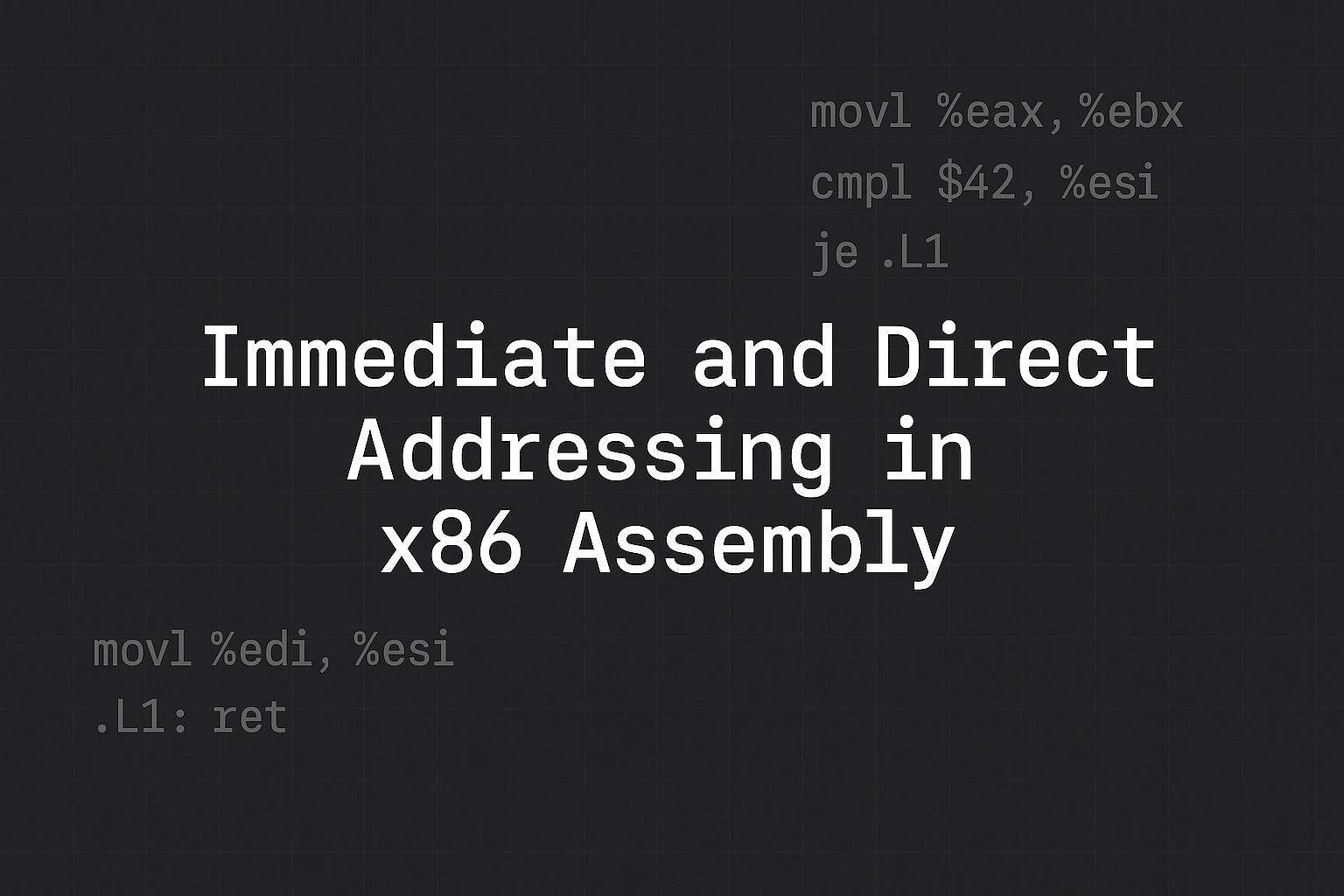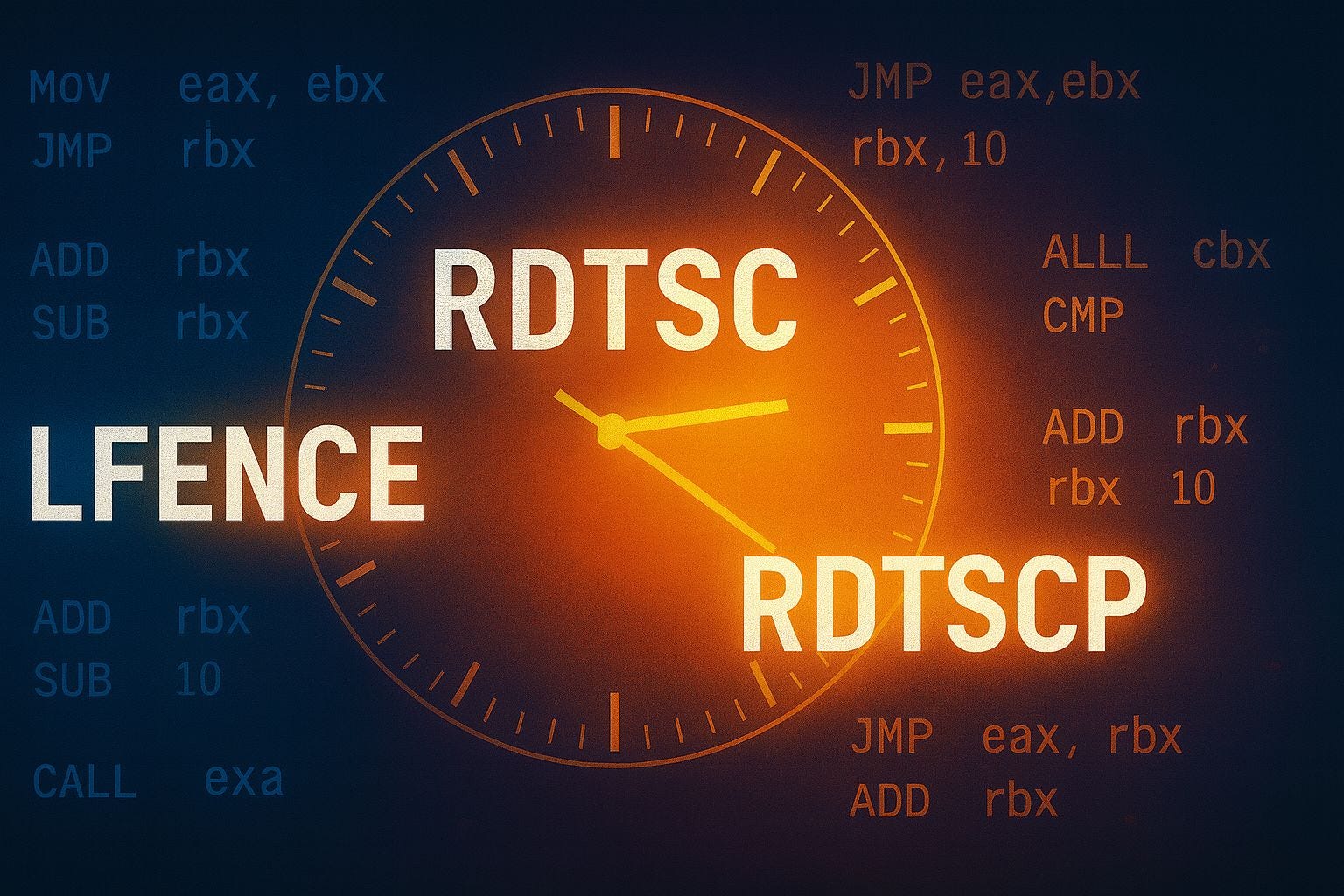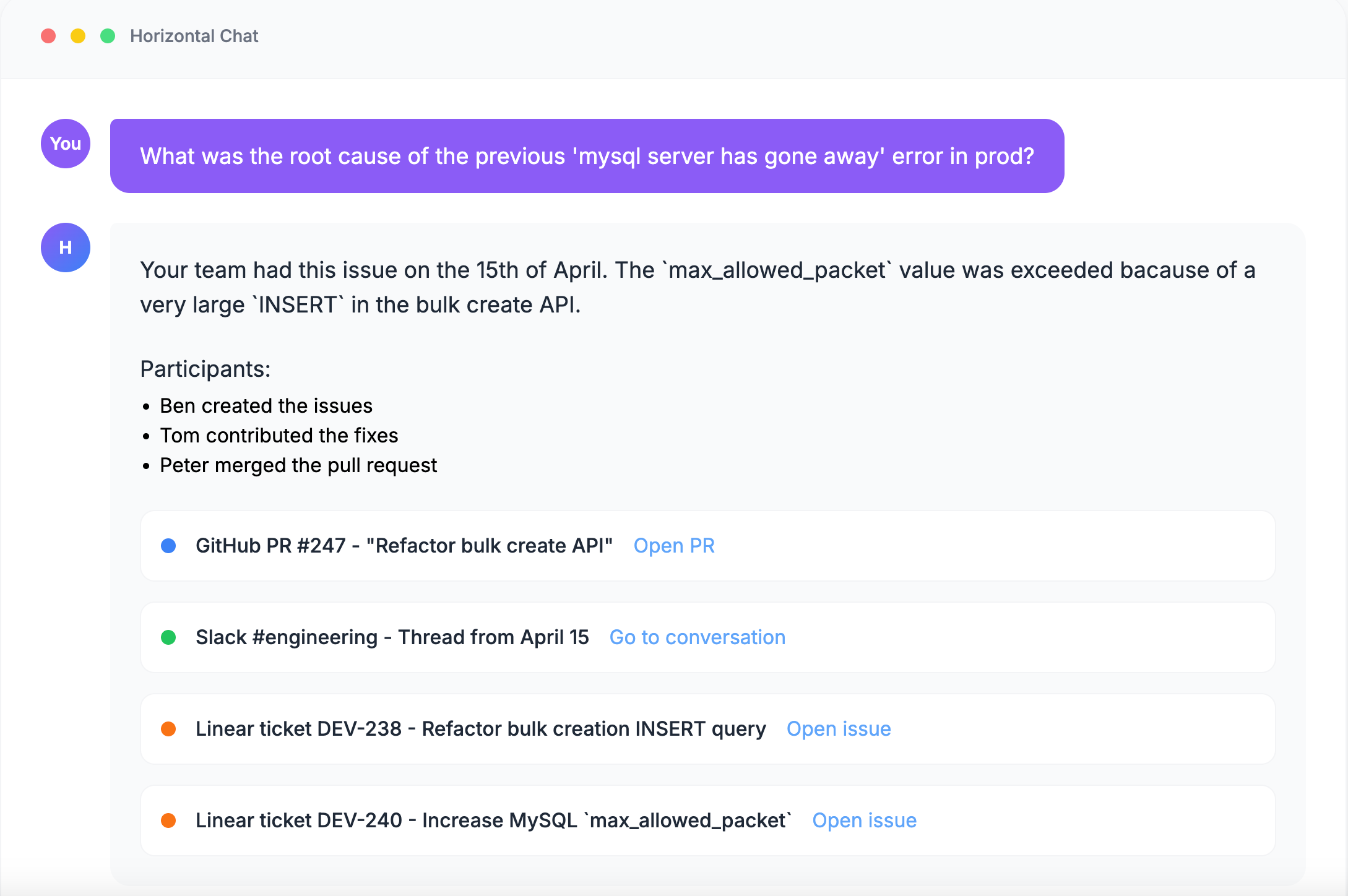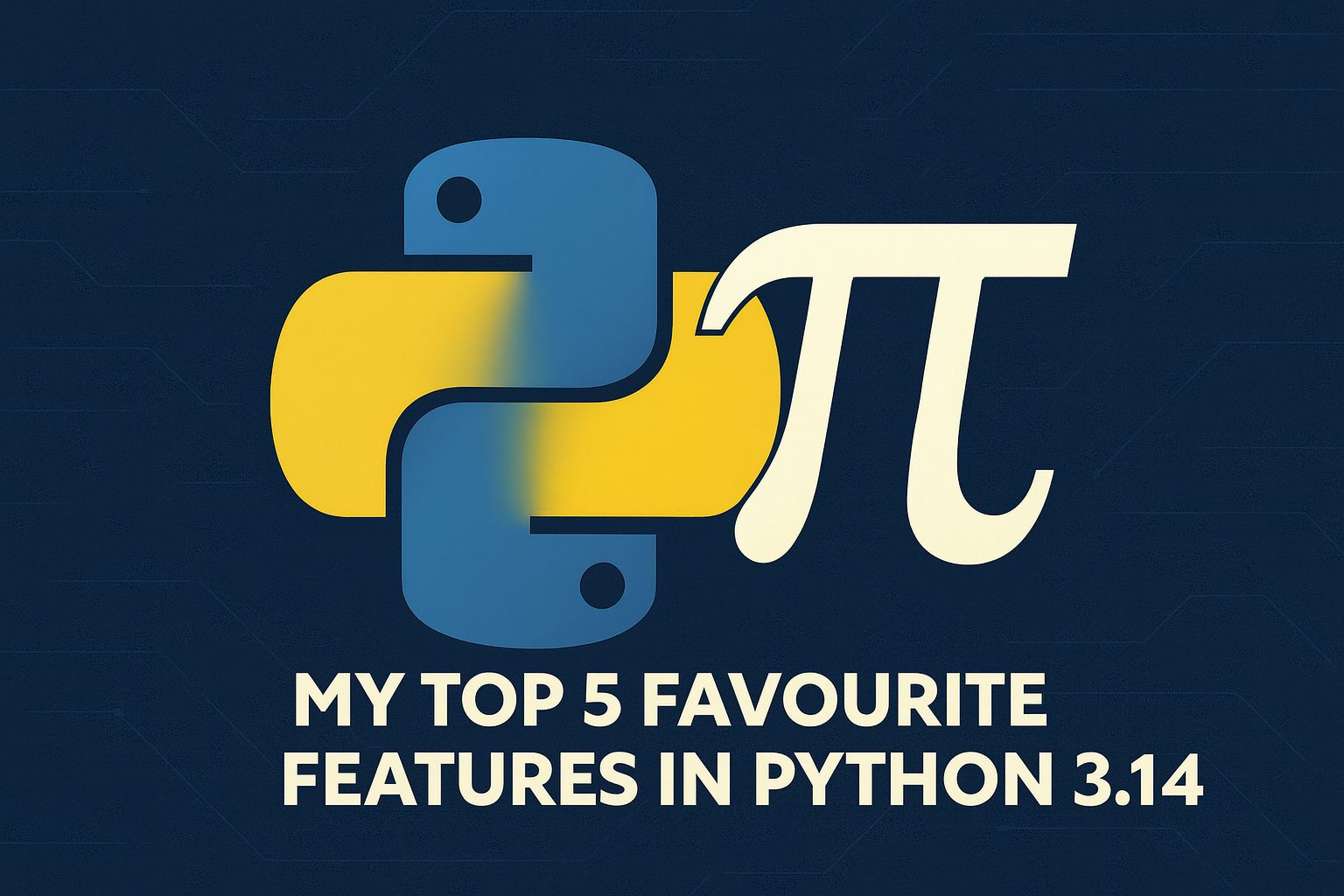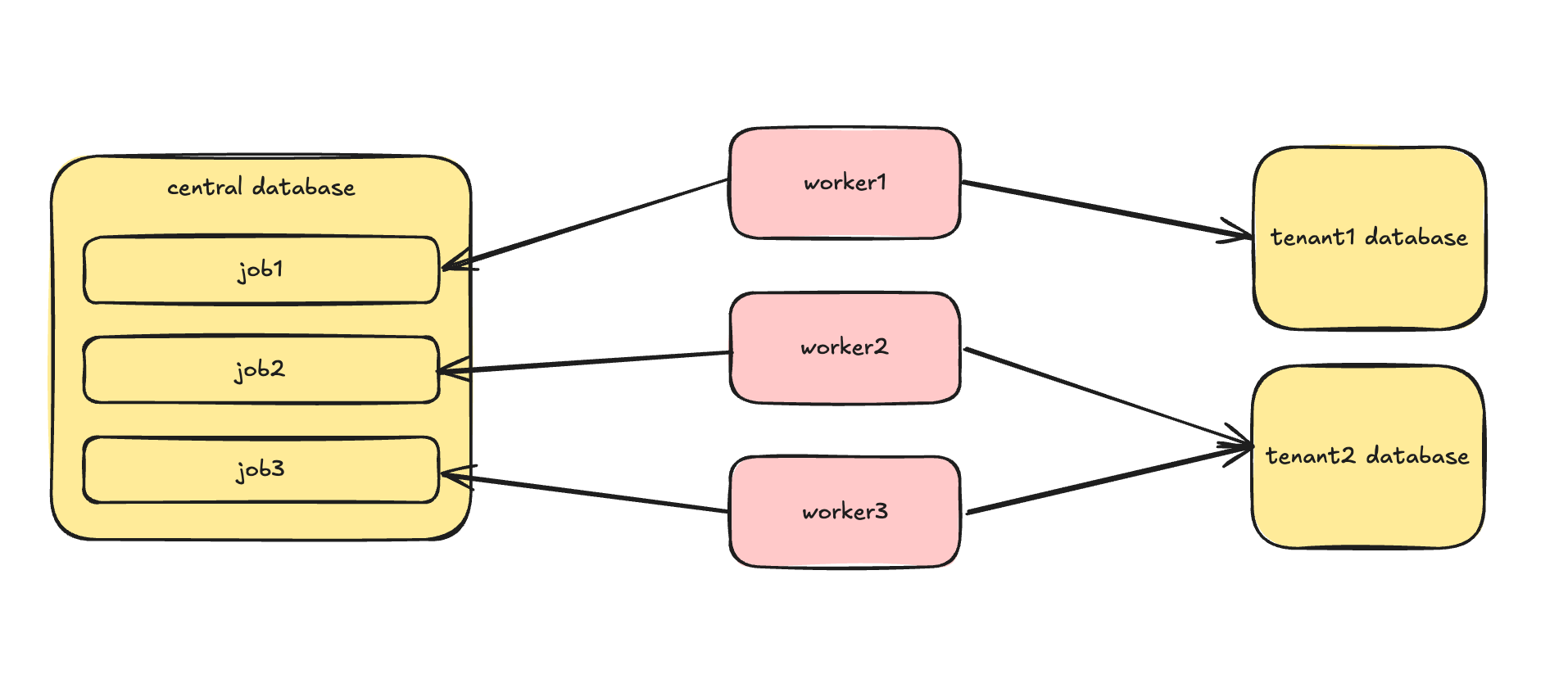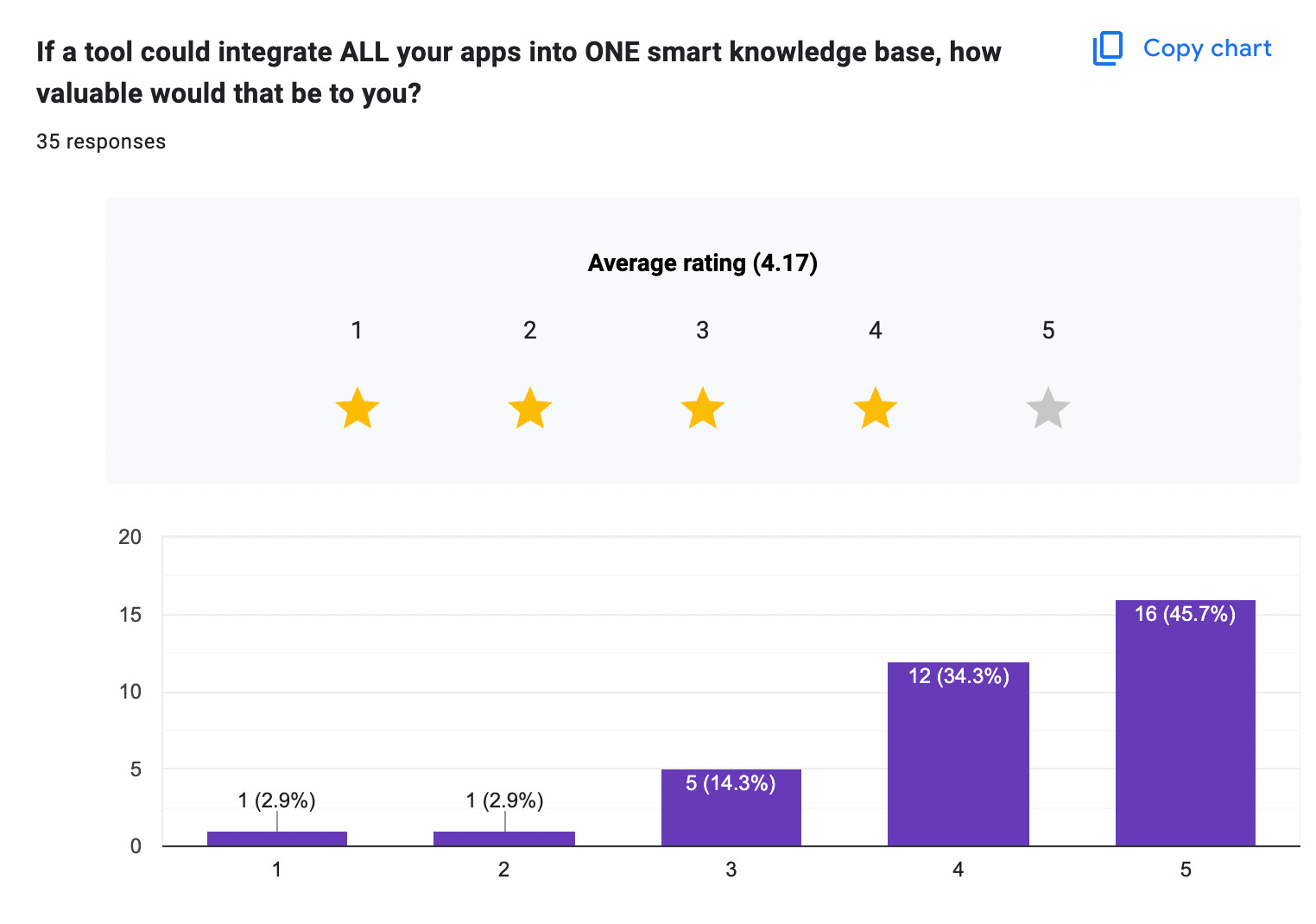
Introduction
This is a new series where I’m documenting the entire process of building my 6th SaaS product.
It’s an app that connects all the knowledge in your team and makes it super accessible:
It’s called Horizontal
To validate or not to validate
Some people say there’s no such thing as product validation (for example, Daniel Vassallo).
Some people say it’s very important to validate your idea before building it.
I think they are just arguing over words. What I mean by product validation is making sure that people are actually interested in your product.
There are two outcomes to this kind of validation:
-
No interest at all. In this case, you probably don’t have a great business idea. Or you asked the wrong people. Maybe you need to pivot.
-
They show interest. Unfortunately, it doesn’t automatically mean you have a successful product idea.
Here’s an example. Let’s say I’m working on a CLI tool that looks through your git history and creates a stunning visual graph that shows which programmer worked on which feature in your app. If I told this idea to 100 developers, I guess more than 50 of them would say, “wow that would be nice.” I would say that too, for sure.
But does this mean you have a great business idea? Of course, not. It’s just a nice tool to play with once and forget it forever.
People who deny the idea of validation often refer to this contradiction.
Real validation is when someone sends you money for your product or service.
Phase 0 – Scratch your own itch
Horizontal is quite complex, so I want to make sure people are interested in something like this.
The idea came to my mind while I was experiencing the pain of having information spread across many different tools. In just 4 hours, I had two very annoying situations. Both of them could have been solved with something like Horizontal.
This is called “scratch your own itch.”
This is probably the very first sign that you are onto something. You have a problem, you experience the pain, and you think of a solution.
Phase 1 – Talk to people
My unfair advantage is a 17k Twitter audience of developers.
I am constantly sending messages to my followers and starting conversations. I do this for three reasons:
-
Giving back. They read my content, bought my books, etc. The least I can do is ask them what they are working on, they are experiencing technical challenges at the moment, etc. I offer a 30-60min call to everyone who needs help with something. I have at least 5 Google Meets every week.
-
Learning about my audience. What problems do they have, what tools do they use, how they use AI, etc. Learning about this makes me a better engineer and maybe gives me some great ideas (content, SaaS, etc) as well.
-
Talking to successful founders. You wouldn’t believe how much I learned by talking to people who run their own agencies, SaaS products, etc.
In the last ~14 days, I was able to talk to 8 founders who already have product-market fit:
-
Joschua from Postel
-
Massimo from Skippership
-
Mischa from Stagent
-
Zacharias from SimpleStats
-
Jerome from CaptainBook
-
Tom from TwoSpeaks
-
Aprod from Captiwate
-
Arvid from PodScan
I pivoted my Twitter account thanks to Joschua, gave up on a few marketing channels thanks to Massimo, changed my landing page thanks to Mischa, changed my database and storage strategy thanks to Arvid, etc.
By the way, one common pattern I’m starting to see is that they don’t give a shit. They DO stuff. They see an opportunity and they act on it. Immediately.
With most of them, I talk about my idea and ask for feedback. I haven’t received a single negative response so far.
Which doesn’t mean too much.
But the first reaction was never a pause, a question, a counter-argument, or a “well… hmm.”
The immediate response was always like: “that’s actually a great idea.”
Phase 2 – Research
Every problem that is worth solving has some evidence on the internet. Questions on Reddit, discussions on StackOverflow, ideas on private Discord servers, opinions on Twitter, etc.
One of the best data sources I could find is the 2024 StackOverflow developer survey.
The survey has a dedicated category for knowledge management and communication (things I’m trying to improve with my app).
And look at these two questions!
Daily time spent searching for answers/solutions:
-
less than 15 minutes: 9.3%
-
15-30 minutes a day: 27%
-
30-60 minutes a day: 37.9%
-
60-120 minutes a day: 18.3%
-
Over 120 minutes a day: 7.6%
Daily time spent answering questions:
-
less than 15 minutes: 20.5%
-
15-30 minutes a day: 32.4%
-
30-60 minutes a day: 30%
-
60-120 minutes a day: 12.8%
-
Over 120 minutes a day: 4.3%
In other words, 65% of developers spend 30+ minutes searching for information, and 47% spend 30+ minutes answering questions.
There are dozens of other questions relevant to my idea. For example:
-
45.2% of developers agree that knowledge silos prevent them from getting ideas across the organization.
-
48.8% of developers agree that they often find themselves answering questions that they’ve already answered before.
So it looks like, on average, 50% of developers experience the same problem as me. Problems that Horizontal can solve.
Phase 3 – Ask people
My unfair advantage is that I have a private newsletter with 7,500 subscribers.
As I already said, Horizontal is quite complicated. It’s not something that you can build on a weekend. I think I need at least 4-6 weeks to build a great MVP.
So I want to be sure that people are interested in what I’m about to build.
I put together a survey. It’s a simple Google Form.
I’ve never done it before, so I don’t know what I’m doing. You can check out the survey here.
If you don’t want to click away or the form is not available anymore, here are the questions:
-
What’s your biggest challenge when managing knowledge across tools like Google Drive, Slack, GitHub, Jira, Email, etc.?
-
If you had a magic wand, what would you wish for to solve this problem?
-
If a tool could integrate ALL your apps into ONE smart knowledge base, how valuable would that be to you? (scale from 1 to 5)
-
What specific features would you expect from such a tool?
-
What would make you hesitant to use a tool like this?
-
Would you pay for a tool like this? (yes/no)
-
If yes, how much would you expect to pay per month? (scale from $10 to $100)
-
Would you be open to a follow-up conversation about this?
-
If yes, leave your email address here, and I’ll reach out to you soon
I wanted to keep the number of questions under ten.
At the moment, I have 20 responses. All of them are positive and contain valuable information about people’s problems and potential solutions.
Only one response contained answers that are waaay out of the scope for an MVP (or even for a first stable version).
People, on average, think Horizontal would be a valuable tool for them:
Most of them would pay for it:
But obviously, people don’t want to pay too much money:
1 = $10
10 = $100
I can understand that people don’t want another expensive subscription.
The interesting thing is that 2 respondents selected $100.
And guess what?
One of them is a CTO, and one of them selected 10 accidentally.
The CTO is the perfect target audience for me. I want Horizontal to be a “team tool” paid by the company, not by individual developers.
And finally, this is the most valuable thing about this survey:
14 people gave me their email addresses to have a follow-up conversation.
That is 7-14 hours of valuable conversation with potential users.
Phase 4 – Drive people
Don’t know why, but I’ve actually never read “Lean Startup.” Shame on me.
I know for a fact that this step originates from that book. But I guess all the earlier things I did come from it, too.
So the next step is putting together a landing page and asking for email addresses. I don’t have a product yet. This page is a waitlist for early users.
They give me their email addresses, in exchange, I’ll give them a discount once the product launches.
I put together a simple landing page:
Horizontal can be useful for any team. But since I can reach out to developers, I want to niche down.
When you read a title like this, it’s much better than “The search platform for any team“ isn’t it?
By the way:
The page continues with a relatable problem from the perspective of a team lead or CTO:
Then it gives you three examples:
You can click on them to see additional context.
And then an email form:
The page follows this format:
-
🎯 Hero → Hook with “the search platform”
-
❌ Problem → Establish pain points
-
💡 Solution → Demonstrate the product in action
-
🚀 CTA → Convert with compelling offer
On a scale from 1..5:
The landing page is built in Vuejs and hosted on DigitalOcean App Platform. It has no backend. Emails are captured in a Google Form. This way, hosting is free and doesn’t need a database.
I’ll drive traffic to this page by building the product in public.
Support
If you want, you can support Horizontal in different ways:
-
Join the project as a marketer
-
Join the project as a developer
-
Bring your team as beta users
If you’re interested, drop me an email at martin@martinjoo.dev or book an appointment in my calendar here.

Computer Science Simplified
Bitcoin
Ethereum
Monero

Donate Bitcoin to The Bitstream
Scan the QR code or copy the address below into your wallet to send some Bitcoin to The Bitstream

Donate Ethereum to The Bitstream
Scan the QR code or copy the address below into your wallet to send some Ethereum to The Bitstream

Donate Monero to The Bitstream
Scan the QR code or copy the address below into your wallet to send some Monero to The Bitstream
Donate Via Wallets
Select a wallet to accept donation in ETH BNB BUSD etc..

